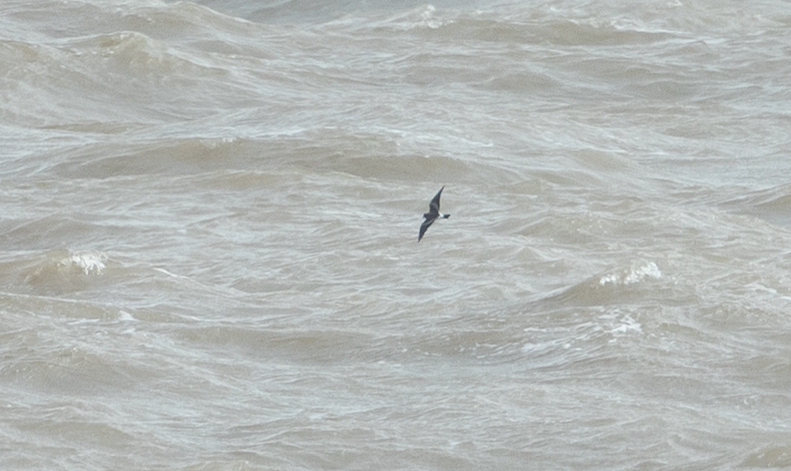Leach's Storm Petrel Oceanodroma leucorhoa
Scarce offshore migrant generally September-November, but also May and December-January. Exceptional inland.

Historically, there are a good number of reports of birds found well inland and also on The Wash particularly at Friskney where several were netted by bird-catchers up to 1881. During a large wreck in 1952 the following records were summarised by Boyd (1954): One picked up alive between Scunthorpe and Appleby, September 19th, was kept and fed for two days then allowed to fly away; one shot on the Brigg side of Scunthorpe, about end of September; one found dead, Brocklesby, November 2nd and another, November 10th or 11th; one found dead, south of Grantham, before November 5th; one long dead, Tetney Marsh, November 16th. That year in England, Boyd (1954) estimated that at least 6,700 birds perished and that birds were found in every English county except Rutland.
Leach’s Petrel records are usually seen in single figures most years, but occasionally weather conditions result in many more. The weekend of September 9th-10th 1989 (see Catley, LBR 1989) was one such occasion with the kind of seabird passage more usually associated with northern and western coasts. Leach’s Petrels in particular figured prominently and the total was a minimum of 183 birds with most seen at Gibraltar Point NNR with at least 32 birds on September 9th and 35 in four hours on September 11th. There had been just 38 records 1960-1988. The reason for this influx was largely the weather conditions at the time, and may also include food availability, but why such large numbers of petrels were in the North Sea is not known for certain. This remarkable event has not been replicated since and in the 10 years 2011-2019 there was an average of three records/ four birds per year but with huge variation and five blank years. The average is greatly skewed by the 16 records of 27 birds in 2013. A final post-script: a Leach's Petrel turned up at Frampton Marsh on October 17th 2017 and remarkably the finder managed to video the bird. Videos are not loadable to this website but the video is still on Twitter at https://twitter.com/i/status/920380424144195584 (with thanks to Steve Black).References
Boyd, H. (1954). The "wreck" of Leach's Petrels in the autumn of 1952. British Birds 47 (5): 137-163.
Catley, G.P. (1987). The autumn influx of Leach's Petrels in 1989. Lincolnshire Bird Report 1989, including the Gibraltar Point Observatory Report: 2-4.
(Account as per new Birds of Lincolnshire (2021), included September 2022)

